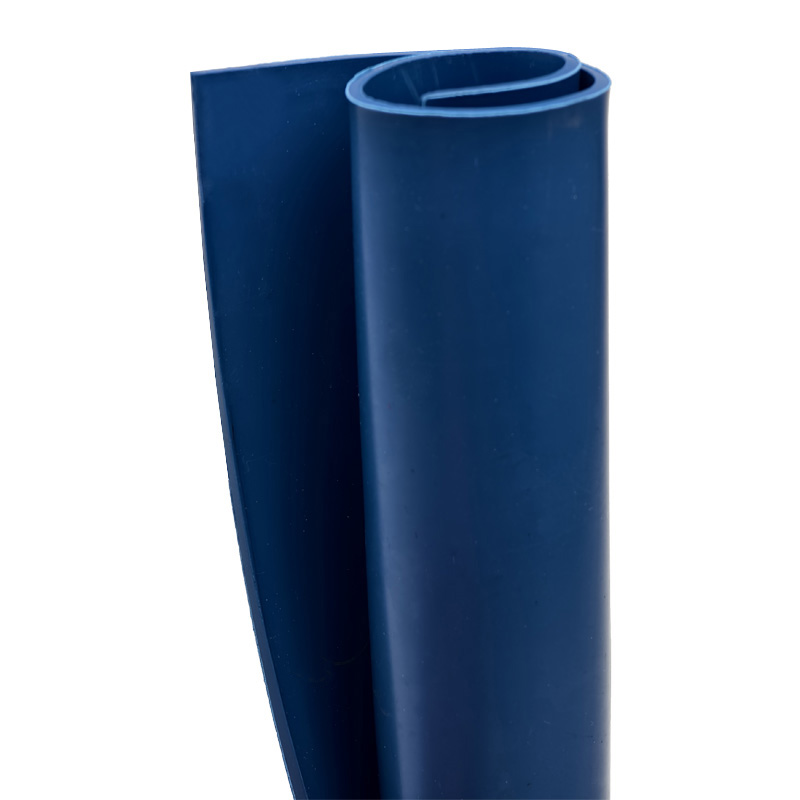What is the tensile strength of NBR Rubber Compound?
2024-09-17
NBR Rubber Compound is a popular type of synthetic rubber, which is commonly used in the manufacturing of various industrial items such as automotive parts, hydraulic hoses, seals, and gaskets. It is made from a combination of acrylonitrile and butadiene and is widely known for its excellent resistance to oil, fuel, and other chemicals. This rubber is also known for its high tensile strength and durability even in extreme temperatures.

What is the tensile strength of NBR Rubber Compound?
Tensile strength is one of the essential properties of NBR Rubber Compound. The tensile strength of this rubber compound is usually around 1200-1500 PSI (pounds per square inch). The tensile strength of NBR rubber can vary depending on the acrylonitrile content in the material. The higher the acrylonitrile content, the stronger the tensile strength. Additionally, the tensile strength of NBR Rubber Compound can be affected by other factors such as temperature, humidity, and other environmental conditions.What are the other physical properties of NBR Rubber Compound?
Apart from tensile strength, NBR Rubber Compound has several other physical properties that make it suitable for various applications. It has excellent resistance to abrasion, tear, and compression set, making it a preferred choice for heavy-duty industrial applications. This rubber compound also has outstanding resistance to oil and fuel, which makes it ideal for use in automotive parts.What are the common industrial applications of NBR Rubber Compound?
NBR Rubber Compound can be used in a wide range of industrial applications, such as automotive parts, oil and gas industry, aerospace, marine, and chemical processing. This rubber compound is widely used in the manufacturing of O-rings, gaskets, seals, and hoses. Its excellent resistance to oil and fuel make it an ideal choice for automotive parts such as fuel hoses, carburetor diaphragms, and transmission seals.Overall, NBR Rubber Compound is an essential material in many industries due to its excellent resistance to oil, fuel, and other chemicals. Its high tensile strength and durability make it a preferred choice for heavy-duty industrial applications.
In conclusion, NBR Rubber Compound is a versatile material that has many industrial applications. With its excellent tensile strength and resistance to oil and fuel, it is an essential material in many industries. If you need more information about NBR Rubber Compound or want to purchase this material, contact Xiamen Sanlongda Rubber Industry Co., Ltd. at their website at https://www.sldrubbersolutions.com. For further inquiries, their email address is dylan@tec-rubber.com.
Scientific Research on NBR Rubber Compound
Here are ten scientific research articles related to NBR Rubber Compound:
1. Rajput, S., Singh, J., & Singh, V. (2020). Mechanical and Rheological Properties of NBR PVC Blends. Polymer-Plastics Technology and Materials, 59(7), 695-702.
2. Bhagat, S., Singh, A. K., Choudhary, V., & Verma, P. N. (2018). Study of Mechanical and Chemical Properties of NBR and NBR/EPDM Blends. Materials Today: Proceedings, 5(11), 23316-23322.
3. Saba, N., Jawaid, M., Alothman, O. Y., Paridah, M. T., & Hassan, A. (2016). Effect of glycerol and nanoclay on the mechanical properties of NBR/starch: a chest for food packaging applications. Journal of Polymer Engineering, 36(5), 447-455.
4. Topcu, T., Karakaya, İ., Şahin, I., Gülümser, G., & Toppare, L. (2015). Preparation and Characterization of NBR Blend Composites Reinforced with Nano-Structured Graphene. Journal of Nanoscience and Nanotechnology, 15(7), 5230-5237.
5. Kalogiannis, K. G., Georgiou, G., & Triantou, D. E. (2010). Rheological properties of NBR/epoxy dual-cure coatings. Progress in Organic Coatings, 68(3), 273-277.
6. de Andrés, A., Gordobil, O., Cabezudo, S., & Labidi, J. (2014). Biodegradable foams based on NBR/PCL blends for packaging purposes. European Polymer Journal, 52, 142-148.
7. Huang, X., Jia, X., Li, J., Lu, Z. and Wang, D. (2018). The influence of yuanmingyuan soil on the properties of NBR rubber. Journal of Physics: Conference Series, 1010(1), p.012004.
8. Ma, Y., Zhu, J., Duan, Z. and Wang, Y. (2018). Preparation and properties of NBR/CS/PE ionic-covalent interpenetrating polymer networks. Polymer Bulletin, 75(5), pp.1911-1929.
9. Yazdani, M., Azizi, H., Yarahmadi, A., Osanloo, M., & Zadhoush, A. (2011). Preparation and characterization of NBR/clay nanocomposites modified by ionic liquid. Composites Science and Technology, 71(15), 1759-1763.
10. Zhang, L., Yang, D., Xing, W., Wang, R., & Wang, Y. (2016). A composite based on a graphene oxide–NBR hybrid and its thermal and electromagnetic properties. New Journal of Chemistry, 40(10), 8463-8469.





